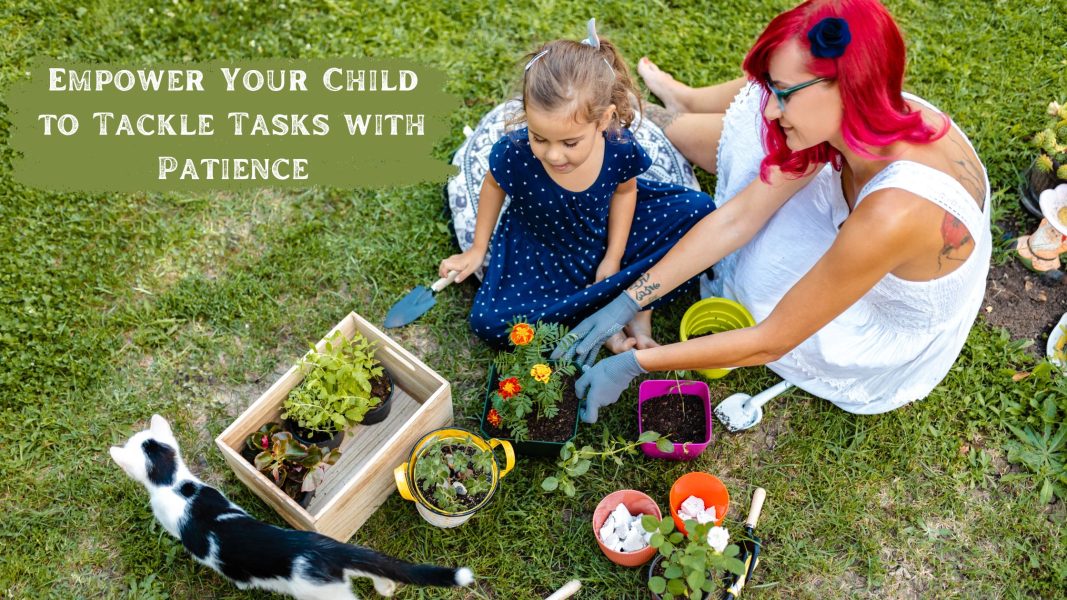Patience is a virtue that can greatly benefit children in various aspects of their lives. It helps them navigate challenges, make better decisions, and develop stronger relationships. However, teaching patience to a child can be quite a task, especially if they have a naturally impatient disposition. In this blog post, we will explore some helpful tips with examples and engaging activities to assist your child in developing patience.
Hitarth’s Story
Let me share a personal anecdote that many parents can relate to. My son, Hitarth, used to be an impatient child. One of the reasons for his impatience was the convenience of modern 10-minute grocery delivery services. Whenever he desired something, we would simply place an order, and his demands were instantly fulfilled. This habit inadvertently reinforced his impatience as he grew accustomed to immediate gratification.
Recognizing the negative impact of this behavior, my partner and I decided to make a change. Although we are still in the process of helping Hitarth develop patience, we are determined to guide him through this journey.
Understanding Impatience
Before we dive into the tips, it’s important to understand why impatience can be a common trait in children. Children often lack a sense of time and struggle to grasp the concept of delayed gratification. Additionally, our fast-paced society, with its instant accessibility, can further contribute to impatience in children. Recognizing these factors helps us approach the situation with empathy and patience ourselves.
Helpful Tips to Foster Patience
Lead by Example
Children learn best by observing their parents and caregivers. Model patience in your daily interactions and be mindful of your own reactions to frustrating situations. Show your child that remaining calm and composed can lead to positive outcomes.
For example, if you’re waiting in a long line at the grocery store, instead of getting visibly frustrated, remain calm and use that time to strike up a friendly conversation with your child. By modeling patience and a positive attitude, you show them how to handle frustrating situations with grace.
Teaching Your Child the Value of Effort and Time
Explain to your child that not everything can be obtained immediately. Help them understand that some things require time, effort, and perseverance. Encourage them to set realistic goals and work towards them gradually.
📣 Loved what you read? Want to go deeper into conscious parenting? ✨ The Power of Manifestation in Parenting is now available — A soulful guide packed with real-life tools like affirmations, energy shifts, and sleep talk that I personally use with my son, Hitarth. 💛 Start your journey toward calmer, connected parenting today. 🎉 Launch Offer: Only ₹99 (limited-time price!) 📲 Instant download. No waiting. 👉 Grab your copy now!.
Let’s say your child wants to learn how to ride a bicycle. Explain that it takes time and effort to master this skill. Encourage them to practice regularly, set small achievable goals like balancing for a few seconds or pedaling without support, and celebrate their progress along the way. This helps them understand that patience and perseverance are essential for achieving long-term goals.
Practice Waiting
Introduce intentional waiting periods in your child’s routine. For instance, encourage them to wait for a specific time before opening a gift or enjoying a treat, or suggest that they wait until the party is over and everyone has gathered around. By waiting, they learn that delayed gratification can lead to a more enjoyable and shared experience. This helps build their tolerance for delayed gratification.
Engage in Engrossing Activities
Encourage your child to participate in activities that require focus and patience, such as puzzles, building blocks, or art projects. These activities help develop concentration and the ability to work towards a goal patiently.
Imagine your child is working on a challenging puzzle. They may feel tempted to rush and quickly finish it, but encourage them to take their time, focus on each piece, and enjoy the process. By doing so, they learn to appreciate the satisfaction that comes from patient problem-solving.
Empowering Your Child to Tackle Tasks with Patience and Resilience
Impatience often stems from a lack of problem-solving abilities. Teach your child how to break down tasks into smaller steps and tackle them systematically. This approach fosters patience and resilience.
Suppose your child is struggling with a difficult math problem. Instead of getting frustrated and giving up, guide them in breaking it down into smaller steps. Encourage them to tackle one step at a time, patiently working through the problem until they find a solution. This teaches them the value of patience and resilience in problem-solving.
Encourage Patience in Communication
Help your child develop patience in conversations by teaching them active listening skills. Encourage them to wait for their turn to speak, allowing others to express themselves fully.
Imagine your child is excitedly telling you about their day, but you receive an important phone call. Instead of cutting them off or ignoring them, kindly explain that you need a moment to finish the call and will listen to them attentively afterward. By practicing active listening and giving them their turn to speak, you teach them the importance of patience and respectful communication.
Engaging Games and Activities
Here are a few games and activities that can make the process of developing patience more enjoyable for your child:
Board Games
Games like chess, Scrabble, or Monopoly require strategic thinking and patience. They teach your child the value of planning ahead and waiting for their turn.
Nature Walks
Take your child on a leisurely walk in nature. Encourage them to observe their surroundings, listen to the sounds of birds, and be patient as they await nature’s surprises.
Cooking and Baking
Involve your child in age-appropriate cooking or baking projects. These activities require patience, following instructions, and waiting for the final delicious outcome.
Yoga and Meditation
Engage your child in yoga or meditation sessions. These practices promote mindfulness and teach them to be patient with their own thoughts and emotions.
Gardening
Start a small garden or assign a few plants to your child’s care. Gardening requires patience as they wait for the seeds to sprout, plants to grow, and eventually bear fruits or flowers.
Jigsaw Puzzles
Work on jigsaw puzzles together as a family. This activity encourages patience, problem-solving, and the satisfaction of completing a complex task.
Storytelling and Reading
Engage your child in storytelling or reading sessions. Encourage them to listen attentively and patiently as the story unfolds, fostering their patience and imagination.
Conclusion
Teaching patience to a child is a gradual process that requires consistent effort and understanding. It is essential to remember that each child is unique, and progress may take time. By leading by example, setting realistic expectations, and engaging in activities that promote patience, we can help our children develop this invaluable trait.
As for my son Hitarth, while we are still on the journey of nurturing his patience, we have already begun to witness small improvements. With love, guidance, and perseverance, we are confident that he will continue to develop patience and reap its rewards in various aspects of his life.
Remember, patience is not just a virtue; it is a life skill that will serve your child well in their personal and professional endeavors. Embrace the journey, celebrate small victories, and enjoy watching your child grow into a patient and resilient individual.
Your comments and shares do more than just support our blog—they uplift the amazing moms who share their stories here. Please scroll down to the end of the page to leave your thoughts, and use the buttons just below this line to share. Your support makes a big difference!



